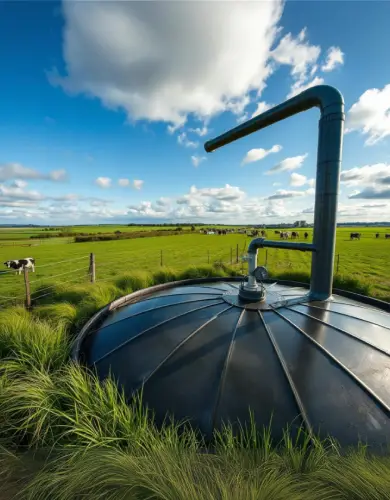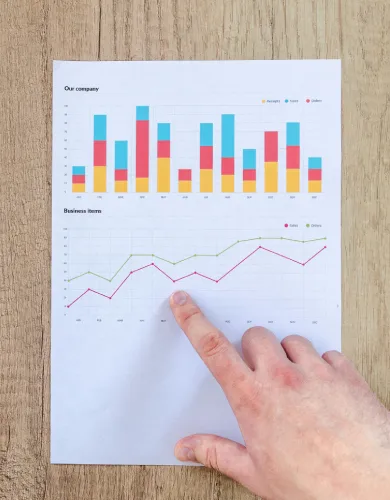Is wind blade recycling a big deal?
Wind blade recycling has garnered much media attention and is often portrayed as a life-or-death scenario for the wind industry. In this article, we give our rationale as to why it’s not a critical issue and what the industry is doing about it:
💡 Key takeaways:
- Current wind turbine blades are primarily made of hard-to-recycle composite materials, contributing to recycling challenges.
- A significant portion of a wind turbine (80-90% by weight) is already being recycled, mainly comprising steel and metals from the tower, nacelle, and other components.
- Efforts are underway to develop fully recyclable wind turbine blades and improve recycling processes, with examples including Siemens Gamesa’s RecyclableBlade and General Electric’s ZEBRA project.
Why are wind turbine blades non-recyclable?
Wind blades must be stiff, strong, durable and lightweight to produce electricity efficiently. They are designed to sustain at least 100 million load cycles (100 full turns) over a period spanning around 20 years.
Manufacturers have historically focused on this performance, as any small improvements in efficiency result in large gains in the overall return on investment. As a result, the most efficient modern blades are made of composite materials that are hard to separate.
Some blades have fibre glass, others carbon fibre, others have embedded balsa wood or foam rubber, and some even contain a steel cable acting as a lightning rod as part of their structure. And most of them have all of these.
This issue has been known for a while but became popular after the image below showing buried wind blades in a landfill in the US went viral in 2020, tainting the popular reputation of the wind industry, which was being accused of greenwashing.
But how bad is the issue really? Obviously, it is a waste, but is it comparatively worth obsessing about?
Do we urgently need to recycle wind turbine blades?
Most of the global waste is not recycled. We have not seen figures for global waste recycling. Still, a rough estimate suggests that high-income countries recycle around 35% of their solid waste, with low-income countries recycling significantly less.
In most of the United States, food waste is still not separated from the trash, and recycling infrastructure is often basic. There is a lot of low-hanging fruit to solve in waste management to have this deep worry about the fate of inert, non-toxic wind turbine blades – without saying it is NOT an issue, because it is.
The rewards for improving general residential waste management (e.g. composting food waste or producing biofuels with things like spent coffee beans) are significantly higher and often receive little attention.
This shows the immense power of the media and PR in policy and decision-making: news of the poster boy of green energy being polluting is awfully appealing to climate sceptics and fossil fuel lobbyists. Yet the reality outside the media lens is completely another story. The vast majority (80-90% of the total weight) of any decommissioned wind turbine is widely recycled because it is very lucrative to do so.
The tower, which comprises most of the weight, is almost entirely made of recyclable metal, steel while the nacelle, hub, shaft, gearbox, generator, and control systems contain so much copper, aluminium, iron, and other metals that recycling businesses are keen on acquiring them.
Downcycling: Blade-to-Cement
Veolia in the US was one of the first companies to tackle the issue by downcycling the decommissioned blades in partnership with the very forgiving cement industry.
Instead of transporting the decommissioned blades directly to a landfill, a temporary dismantling facility is set up in the wind farm, where the disassembled blades are cut into smaller pieces to fit inside bulk-carrying trucks.
The trucks take the blade pieces to their facility in Louisiana, where a specialised shredder and separator can chop the blades into cm-sized pieces that can be incorporated into cement mixes due to their incredible durability.
This process helps the cement industry slightly reduce its carbon footprint while preventing wind blades from filling the limited landfill space.
This is not bad for the first iteration, considering that the global waste from wind turbine blades will exceed 47 million tonnes by 2050.
However, this is clearly only a beta solution that slightly alleviates the problem. Re-using and directly recycling are better alternatives.
Re-using wind turbine blades
Architectural researchers have some reservations about downcycling blades into near-worthless construction materials and instead have a very different vision from environmental engineers.
They see wind blades as extremely useful materials to re-purpose, as they are lightweight and extremely weather and UV-resistant- the perfect material for many things. One of the main research groups is the Re-Wind Network, which has spent some time conceptualising real-world use cases for decommissioned wind blades.
In Ireland, the group built a pedestrian footbridge and used the blades as cell phone towers to expand 5G networks. In the Netherlands, architects have been turning weather-proof blades into playgrounds, while in Denmark, they’ve been used to make public bike sheds.
There is a plethora of other ideas, such as using them as Bladebuoys, BladeJettys, floating structures, and, very interestingly, poles for transmission lines. While some of these ideas are project-based and not scalable to the millions of tonnes expected by 2050, some, like poles for transmission lines, are VERY scalable given the amount of new overhead lines that are required to power the energy transition.
Creating fully recyclable blades
And then there are the engineering researchers, who, together with manufacturers, see the ideal solution as creating 100% recyclable wind turbines- which are already being developed by many teams.
Siemens Gamesa (a German-Spanish firm) unveiled their ReyclableBlade in 2022, which focusses on new recycling techniques rather than drastically changing the blade manufacturing itself.
Their website doesn’t reveal much information, except that they have changed the resin’s composition, making it easily recyclable using a mildly acidic solution. A couple of projects in Europe and the UK are already having these new blades installed on their turbines.
Another example is the ZEBRA project by General Electric (US firm), who have built a 62-meter prototype blade made of Elium, a glass-fibre reinforced thermoplastic that can be melted and re-shaped into new blades or other objects.
Despite this, Danish manufacturer Vestas is taking a similar approach to Siemens-Gamesa through its CETEC project. This project focuses on novel recycling methods for its existing blades, perhaps under the belief that thermoplastics cannot yet reach the same performance levels.
Meanwhile, in the east, Chinese manufacturer Goldwind has developed a recycling process for old turbines where 30% of the material is re-furbished into 3D printable plastic instead of being downcycled into clinker.
These examples are not exhaustive: tens of other large manufacturers are competing to innovate windblade construction and its respective recycling.
Conclusion
First things first: wind blade recycling is NOT the most critical issue in the waste management world. It is considerable, given the large volume of materials, yet it is not as critical as, for instance, bad organic waste management (millions of tons decomposing in landfills) or illegal hazardous waste disposal in developing countries.
Arguably, downcycling and reusing the blades would suffice, yet the industry is going to great lengths to build PR-friendly blades that are 100% recyclable, which is ultimately not a bad thing.
Yet we worry that this is taking time and space from the REAL issues plaguing the world, amongst them the slow energy transition, biodiversity loss, plastic pollution in waterways, etc.
This becomes painfully obvious when you’re driving down the Peruvian Panamerican highway, with thousands of tonnes of illegally disposed litter visible all the way to the horizon.
Explore commercial waste collection quotes with our easy-to-use journey and find cheaper business waste collection costs for your company; you can also explore your specific sector and location.
External Resources
- Insider Business – Why Wind Turbines are so hard to recycle
- Disruptive Investing – The Solution to Recycling Wind Turbine blades with Veolia
- Free Doc Bites – How Tind Turbines are Recycled
- Windeurope.org – Europe-wide ban on landfilling turbine blades by 2025
- Electrek – Siemens Gamesa recyclable wind blades
- Siemens Gamesa – RecyclableBlade
- General Electric – ZEBRA Project
- Vestas – CETEC
- Windpower Monthly – Goldwind 3D printed blades
- Re-wind Network
- IRENA – Energy 2050
- BBC News
- GE – Concrete benefits of recycled wind blades
- Re-wind Catalog
- EEPower

